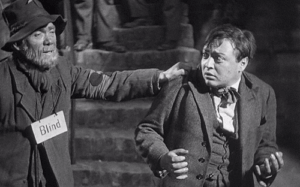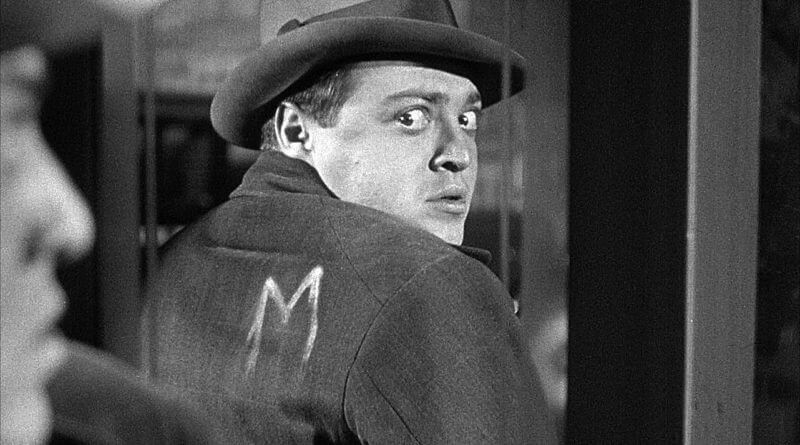Review: M (1931) ★★★★½
As Fritz Lang’s first sound film, M (1931) stands out as a hallmark achievement of the early sound era and German cinema of the Weimar Republic. The story follows the exploits of a serial killer who targets children, and the ensuing investigation to capture him. Hans Beckert (played by Peter Lorre) kidnaps and murders young children, and there is even an implied sense of sexual deviancy on his part, though none of the characters explicitly state that the attacks are of a sexual nature. Beckert begins writing taunting letters to the police, who work around the clock to capture him before he can murder again. The police follow every lead, and conduct an increasing number of raids on clubs and bars that are frequented by local criminals. In an attempt to put an end to these raids, the mob bosses come together, devising a plan to capture the child murderer themselves. The remainder of the film focuses on Beckert as he attempts to avoid capture by both the criminal underworld and the police force.
The subject matter in M is controversial (for its time), especially considering that the film does not portray Beckert as completely despicable or undeserving of any sympathy. The audience is made to identify with his character, and, by the end of the film, viewers come to understand what drives him to kill. Nonetheless, he is established as the villain, and the central message of the film seems to be that parents should never neglect their children, for fear that people like Beckert do exist in the world.
Though none of the murders are ever shown explicitly, Lang uses clever visual cues to progress the story without gratuitous depictions. For example, in the opening scene of the film, a young girl walks home from school, bouncing a ball on the sidewalk. Her mother anxiously waits for her to return, and a wanted poster informs the audience that a child murderer is already on the loose. Before the girl can make it home, Beckert stops her in the street. He offers to buy her a balloon, and they continue walking together. As the girl’s mother sets the table for dinner, calling out desperately for her daughter, it cuts to shots of the girl’s ball rolling to a standstill in a patch of grass, while her balloon gets caught in a row of telephone lines up above.

Lang is able to create a perfect sense of dread and paranoia with the new sound technology afforded to him. He even uses the melody from “In The Hall of the Mountain King” as a key element in the plot. Beckert whistles the song as he stalks the streets, eventually allowing for his identification as the murderer. The sound, though occasionally subpar (it even drops out entirely at times), helps build the momentum of the narrative and emphasizes the thrill of the chase. Certain editing techniques helps flesh out the narrative even more. The use of intercutting during scenes with the criminals and police discussing their plans draws attention to the duality of the plot.

Overall, M is a fantastic film and one of the finest of the early sound era, helping to catapult Peter Lorre’s career as an actor and cement Fritz Lang’s status as a highly talented and influential German auteur. It showcases Lang’s ability to make sound a central motif and a necessary improvement to the film format, which, at the time, proved that it was more than just a gimmick. M is incredibly engaging, even for today’s audiences, and will forever be a significant fixture in the history of cinema and film noir.
Rating: ★★★★½ out of 5
Fritz Lang’s M is available to rent or purchase via Amazon here.

